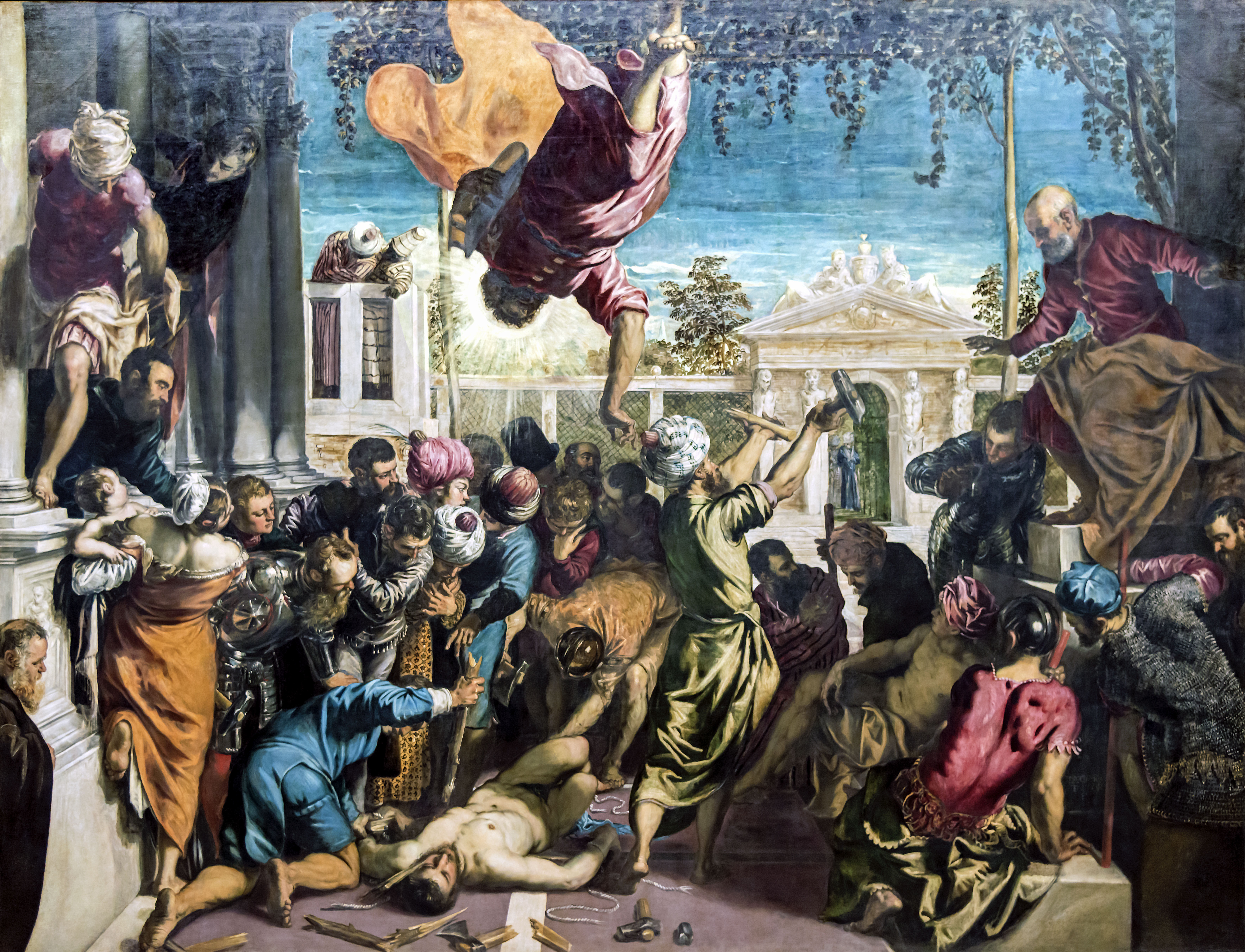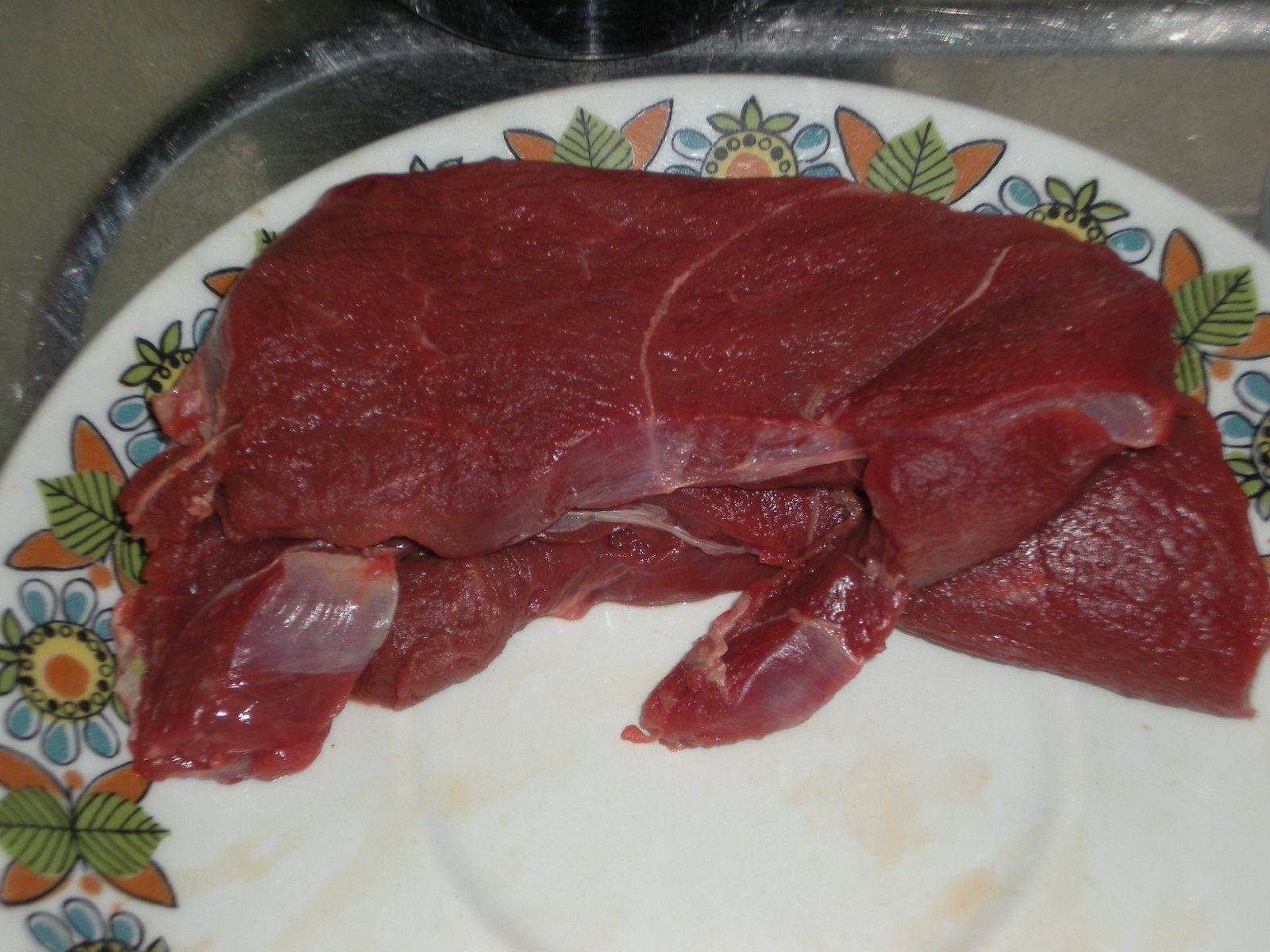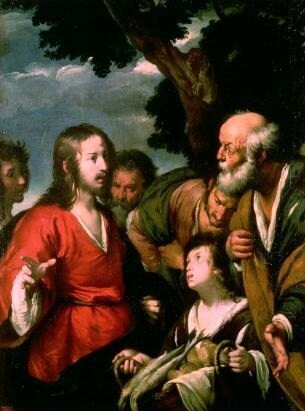|
Miracle Of The Moose
Venerable Macarius' Miracle of the Moose (russian: Чу́до преподо́бного Мака́рия У́нженского о лосе́) is a miracle associated with the name of Venerable Macarius of the Yellow Water Lake and the Unzha (1349-1444), a Saint of the Russian Orthodox Church. It is thought to have occurred in June 1439 in the woodlands of what today is Semyonov District of Nizhny Novgorod Oblast. The account of the miracle in the ''Life of Venerable Macarius'' During the invasion of Russia by the Khan Olug Moxammat of Kazan in 1439, Zheltovodsky (Yellow Lake) Monastery of Holy Trinity was destroyed. Venerable Macarius (russian: Макарий, Makariy), the founder of the monastery, was taken prisoner along with a few other survivors. After meeting with Macarius, the khan was so impressed by the nonagenarian abbot's piety and love of his neighbor, that he released him and his disciples, on the condition that they leave the Yellow Lake site. The Yellow La ... [...More Info...] [...Related Items...] OR: [Wikipedia] [Google] [Baidu] |
Miracle
A miracle is an event that is inexplicable by natural or scientific lawsOne dictionary define"Miracle"as: "A surprising and welcome event that is not explicable by natural or scientific laws and is therefore considered to be the work of a divine agency." and accordingly gets attributed to some supernatural or praeternatural cause. Various religions often attribute a phenomenon characterized as miraculous to the actions of a supernatural being, (especially) a deity, a magician, a miracle worker, a saint, or a religious leader. Informally, English-speakers often use the word ''miracle'' to characterise any beneficial event that is statistically unlikely but not contrary to the laws of nature, such as surviving a natural disaster, or simply a "wonderful" occurrence, regardless of likelihood (e.g. "the miracle of childbirth"). Some coincidences may be seen as miracles. A true miracle would, by definition, be a non-natural phenomenon, leading many writers to dismiss miracles as p ... [...More Info...] [...Related Items...] OR: [Wikipedia] [Google] [Baidu] |
Apostles' Fast
The Apostles' Fast, also called the Fast of the Holy Apostles, the Fast of Peter and Paul, or sometimes St. Peter's Fast, is a fast observed by Eastern Orthodox, Oriental Orthodox, Eastern Catholic, and Reformed Orthodox Christians. In the Byzantine tradition, the Fast begins on the second Monday after Pentecost (the day after All Saints' Sunday), whereas in the Coptic and old Syriac traditions, the Fast begins on the first Monday after Pentecost. It continues until the Feast of Saints Peter and Paul on June 29. Traditionally, its duration varies from eight to forty-two days because of the moveable nature of Pascha. However, in Eastern Orthodox Churches that follow the Revised Julian calendar, the fast can be as long as 29 days, or may not occur at all in some years. History Having rejoiced for fifty days following Pascha (Easter), the Resurrection of Jesus Christ, the Apostles began to prepare for their departure from Jerusalem to spread Christ's message. According to Sacred ... [...More Info...] [...Related Items...] OR: [Wikipedia] [Google] [Baidu] |
Fresco
Fresco (plural ''frescos'' or ''frescoes'') is a technique of mural painting executed upon freshly laid ("wet") lime plaster. Water is used as the vehicle for the dry-powder pigment to merge with the plaster, and with the setting of the plaster, the painting becomes an integral part of the wall. The word ''fresco'' ( it, affresco) is derived from the Italian adjective ''fresco'' meaning "fresh", and may thus be contrasted with fresco-secco or secco mural painting techniques, which are applied to dried plaster, to supplement painting in fresco. The fresco technique has been employed since antiquity and is closely associated with Italian Renaissance painting. The word ''fresco'' is commonly and inaccurately used in English to refer to any wall painting regardless of the plaster technology or binding medium. This, in part, contributes to a misconception that the most geographically and temporally common wall painting technology was the painting into wet lime plaster. Even in appar ... [...More Info...] [...Related Items...] OR: [Wikipedia] [Google] [Baidu] |
Icon
An icon () is a religious work of art, most commonly a painting, in the cultures of the Eastern Orthodox, Oriental Orthodox, and Catholic churches. They are not simply artworks; "an icon is a sacred image used in religious devotion". The most common subjects include Christ, Mary, saints and angels. Although especially associated with portrait-style images concentrating on one or two main figures, the term also covers most religious images in a variety of artistic media produced by Eastern Christianity, including narrative scenes, usually from the Bible or the lives of saints. Icons are most commonly painted on wood panels with egg tempera, but they may also be cast in metal, carved in stone, embroidered on cloth, done in mosaic or fresco work, printed on paper or metal, etc. Comparable images from Western Christianity can be classified as "icons", although "iconic" may also be used to describe a static style of devotional image. In the Greek language, the term for icon paintin ... [...More Info...] [...Related Items...] OR: [Wikipedia] [Google] [Baidu] |
Macarius - Miracle Of The Moose - Fresco
Macarius is a Latinized form of the old Greek given name Makários (Μακάριος), meaning "happy, fortunate, blessed"; confer the Latin '' beatus'' and ''felix''. Ancient Greeks applied the epithet ''Makarios'' to the gods. In other languages the name has the following forms: *Finnish: the given name Kari Kari or KARI may refer to: Places *Kari, Jhunjhunu, a village in Rajasthan, India * , a village in Mouhoun Province, Burkina Faso *Kari, Tikamgarh, a town in Madhya Pradesh, India * Kari, Iran, a village in Bushehr Province, Iran * Kari-ye Bozorg ( ... or Karri. Derived surname: Mäkäräinen. *Greek: Makarios (Μακάριος) *Italian: Macario, which is also a family name *Portuguese: Macário * Spanish Macarena (name) *Russian/Ukrainian/Belarusian: Makar (Макар) from Church Slavonic Makariy (Макарій). Derived surnames: Makarov (surname), Makarov/Makarova, Makarenko, Makarchuk, Makarevich. *Serbian: Makarije (other), Makarije/Макарије *Roman ... [...More Info...] [...Related Items...] OR: [Wikipedia] [Google] [Baidu] |
Amalek
Amalek (; he, עֲמָלֵק, , ar, عماليق ) was a nation described in the Hebrew Bible as a staunch enemy of the Israelites. The name "Amalek" can refer to the nation's founder, a grandson of Esau; his descendants, the Amalekites; or the territories of Amalek, which they inhabited. Etymology In some rabbinical interpretations, Amalek is etymologised as , 'a people who lick (blood)', but most specialists regard the origin to be unknown. Amalekites in the Hebrew Bible According to the Bible, Amalek was the son of Eliphaz (himself the son of Esau, ancestor of the Edomites) and Eliphaz's concubine Timna. Timna was a Horite and sister of Lotan. Amalek is described as the "chief of Amalek" among the "chiefs of the sons of Esau", from which it is surmised that he ruled a clan or territory named after him. The Amalekites () were considered to be Amalek's descendants through the genealogy of Esau. In the oracle of Balaam, Amalek was called the 'first of the nations'. One modern ... [...More Info...] [...Related Items...] OR: [Wikipedia] [Google] [Baidu] |
Moses
Moses hbo, מֹשֶׁה, Mōše; also known as Moshe or Moshe Rabbeinu (Mishnaic Hebrew: מֹשֶׁה רַבֵּינוּ, ); syr, ܡܘܫܐ, Mūše; ar, موسى, Mūsā; grc, Mωϋσῆς, Mōÿsēs () is considered the most important prophet in Judaism and one of the most important prophets in Christianity In Christianity, the figures widely recognised as prophets are those mentioned as such in the Old Testament and the New Testament. It is believed that prophets are chosen and called by God. This article lists such prophets. The first list bel ..., Prophets and messengers in Islam, Islam, the Druze faith, the Baháʼí Faith and Table of prophets of Abrahamic religions, other Abrahamic religions. According to both the Bible and the Quran, Moses was the leader of the Israelites and Law of Moses, lawgiver to whom the Mosaic authorship, authorship, or "acquisition from heaven", of the Torah (the first five books of the Bible) is attributed. According to the Book of E ... [...More Info...] [...Related Items...] OR: [Wikipedia] [Google] [Baidu] |
Julian Calendar
The Julian calendar, proposed by Roman consul Julius Caesar in 46 BC, was a reform of the Roman calendar. It took effect on , by edict. It was designed with the aid of Greek mathematicians and astronomers such as Sosigenes of Alexandria. The calendar became the predominant calendar in the Roman Empire and subsequently most of the Western world for more than 1,600 years until 1582, when Pope Gregory XIII promulgated a minor modification to reduce the average length of the year from 365.25 days to 365.2425 days and thus corrected the Julian calendar's drift against the solar year. Worldwide adoption of this revised calendar, which became known as the Gregorian calendar, took place over the subsequent centuries, first in Catholic countries and subsequently in Protestant countries of the Western Christian world. The Julian calendar is still used in parts of the Eastern Orthodox Church and in parts of Oriental Orthodoxy as well as by the Berbers. The Julian calenda ... [...More Info...] [...Related Items...] OR: [Wikipedia] [Google] [Baidu] |
July 25 (Eastern Orthodox Liturgics)
July 24 - Eastern Orthodox calendar - July 26 All fixed commemorations below are celebrated on ''August 7'' by Old Calendar. For ''July 25th'', Orthodox Churches on the Old Calendar commemorate the Saints listed on ''July 12''. Saints * ''The Dormition of the Righteous Anna, Mother of the Most Holy Theotokos''.July 25/August 7 Orthodox Calendar (PRAVOSLAVIE.RU). Συναξαριστής. 25 Ιουλίου '' ECCLESIA.GR. (H ΕΚΚΛΗΣΙΑ ΤΗΣ ΕΛΛΑΔΟΣ). * The Holy Martyrs of Lyons: (c. 177) [...More Info...] [...Related Items...] OR: [Wikipedia] [Google] [Baidu] |
Kontakion
The kontakion (Greek , plural , ''kontakia'') is a form of hymn performed in the Orthodox and the Eastern Catholic liturgical traditions. The kontakion originated in the Byzantine Empire around the 6th century and is closely associated with Saint Romanos the Melodist (d. 556). It is divided into strophes (''oikoi'', stanzas) and begins with a prologue (the ''prooimoion'' or ''koukoulion''). A kontakion usually has a biblical theme, and often features dialogue between biblical characters. The only kontakion that is regularly celebrated in full length today is the Akathist to the Theotokos. Etymology The word ''kontakion'' derives from the Greek κόνταξ (''kontax''), which means "rod" or "stick" and refers specifically to the pole around which a scroll is wound. While the genre dates to at least the 6th century, the word itself is attested only in the 9th century. The motivation for the name is likely "the way in which the words on a scroll unfurl as it is read". A hymn ... [...More Info...] [...Related Items...] OR: [Wikipedia] [Google] [Baidu] |
Venison
Venison originally meant the meat of a game animal but now refers primarily to the meat of antlered ungulates such as elk or deer (or antelope in South Africa). Venison can be used to refer to any part of the animal, so long as it is edible, including the internal organs. Venison, much like beef or pork, is categorized into specific cuts, including roast, sirloin, and ribs. Etymology The word derives from the Latin ''venari'', meaning "to hunt or pursue". This term entered the English language through Norman French ''venaison'' in the 11th century, following the Norman conquest of England and the establishment of Royal Forests. Definition ''Venison'' originally described meat of any game animal killed by hunting and was applied to any animal from the families ''Cervidae'' (true deer), ''Leporidae'' (rabbits and hares), ''Suidae'' (wild boar) and certain species of the genus ''Capra'' (goats and ibex). In southern Africa, the word ''venison'' refers to the meat of antelope, a ... [...More Info...] [...Related Items...] OR: [Wikipedia] [Google] [Baidu] |
Feeding The Multitude
In Christianity, the feeding the multitude is two separate miracles of Jesus reported in the Gospels. The first miracle, the "Feeding of the 5,000", is the only miracle—aside from the resurrection—recorded in all four gospels (Matthew 14:13–21; Mark 6:31–44; Luke 9:12–17; John 6:1–14). The second miracle, the "Feeding of the 4,000", with 7 loaves of bread and a few small fish, is reported by Matthew 15:32–39 and Mark 8:1–9, but not by Luke or John. The feeding of the 5,000 people The Feeding of the 5,000 is also known as the "miracle of the five loaves and two fish"; the Gospel of John reports that Jesus used five loaves and two fish supplied by a boy to feed a multitude. According to Matthew's gospel, when Jesus heard that John the Baptist had been killed, he withdrew by boat privately to a solitary place. Luke specifies that the place was near Bethsaida. The crowds followed Jesus on foot from the towns. When Jesus landed and saw a large crowd, he had compassion ... [...More Info...] [...Related Items...] OR: [Wikipedia] [Google] [Baidu] |

.jpg)



_(cropped).jpg)


